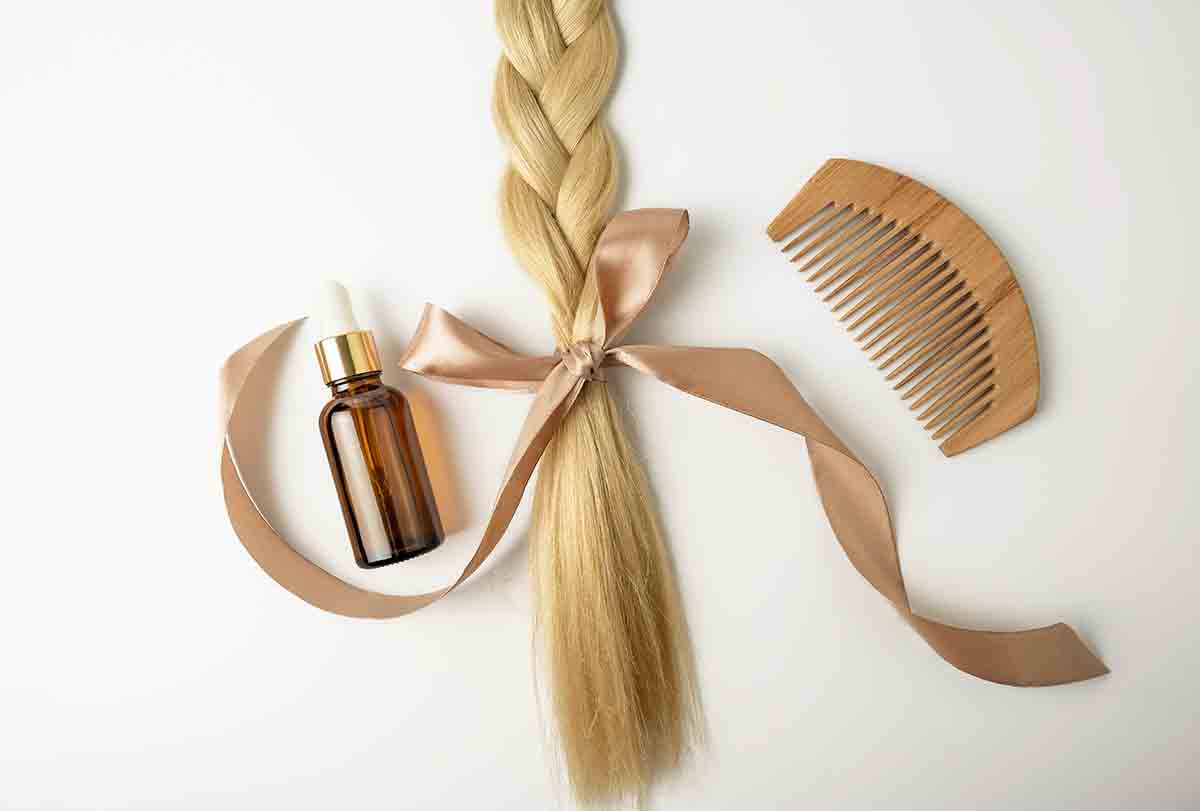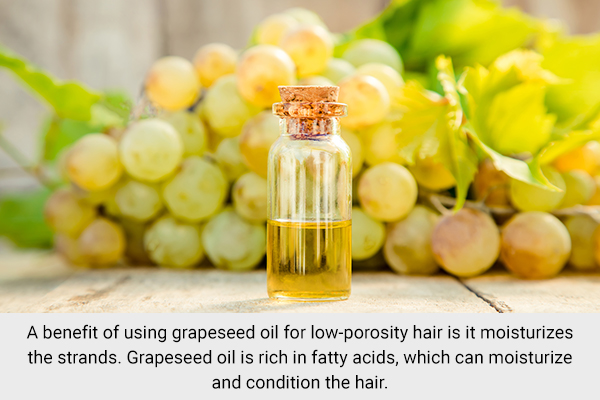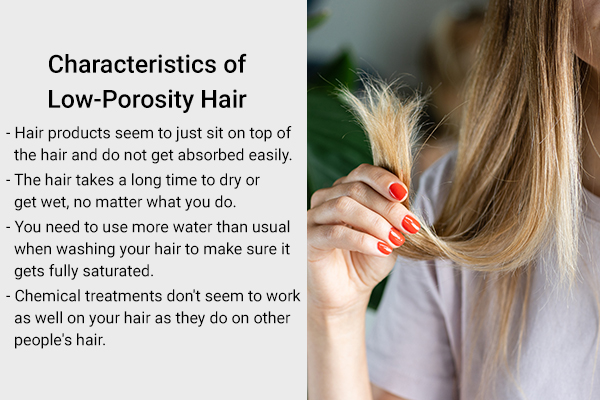In this article:
If your hair is not so porous, the cuticles of your strands are closely sealed, bringing in challenges for moisture and hair products to move in. This can result in dryness and difficulty styling your hair.

Fortunately, this is something hair oils can help with. (1) There are natural oils that can help address these concerns, and one such oil is grapeseed oil.
Derived from the seeds of grapes (Vitis vinifera), grapeseed oil is a lightweight oil, packed with vitamin E, antioxidants, and beneficial fatty acids. (2) These properties make it a potentially good oil for those who have low-porosity hair.
While further research is needed to fully understand its effects on low-porosity hair, hair experts do say that people with low-porosity hair may benefit from grapeseed oil.
Why Is Grapeseed Oil Useful for Low-Porosity Hair?
Low-porosity hair is prone to have problems soaking up moisture effectively. To solve this, integrating oils into your hair routine becomes important.
It is vital to choose a suitable oil for such a hair type. One such oil is grapeseed oil.
1. Grapeseed oil is lightweight and easily penetrates the hair shaft
According to hair experts, lightweight oils are outstanding for low-porosity hair as they can easily penetrate the hair shaft, whereas heavy oils have higher levels of saturated fats and may not be as effective for low-porosity hair.
Grapeseed oil is a great option for low-porosity hair due to its low percentage of saturated fat (around 10%–18%). In comparison, oils such as coconut oil contain higher levels of saturated fat (80%–90%) and may not be so good for such a hair type. (3)(4)
So, the low molecular weight of grapeseed oil allows it to deeply penetrate the deep layers of the hair shaft, facilitating the delivery of useful antioxidants, (2)(5) moisture, and minerals to the hair.
2. Grapeseed oil has brilliant moisturizing activity

A benefit of using grapeseed oil for low-porosity hair is it moisturizes the strands. Grapeseed oil is rich in fatty acids, which can moisturize and condition the hair.
Moreover, fatty acids are crucial for healthy hair growth, as they aid in nourishing and strengthening the hair follicles. (6)
The oil is light and easily absorbed by the hair, providing much-needed moisture. This can help to reduce dryness and brittleness associated with low-porosity hair, making the hair soft and manageable. (4)(6)
3. Grapeseed oil prevents hair damage
Grapeseed oil contains antioxidants, which can safeguard the hair from harm induced by free radicals. Free radicals are hazardous compounds that can damage the cells in the body, including hair cells.
Antioxidants can counteract free radicals, preventing them from inducing further harm. (2)(5)
4. Grapeseed oil promotes hair growth
Grapeseed oil is rich in vitamin E, which is a strong antioxidant that can help to improve the condition of the hair and scalp. Vitamin E can strengthen the hair follicles, decreasing the chances of breakage and facilitating healthy hair growth. (2)(5)(7)
Scientists have examined around 1,000 plant extracts to find natural products that can promote hair growth. After much searching, it was found that the proanthocyanidins extracted from grape seeds can promote hair follicle cell proliferation by 230% in mice, which is remarkable.
This research result suggests that grapeseed oil, containing proanthocyanidins, can be an effective agent for inducing hair growth. (8)
Characteristics of Low-Porosity Hair
Here are the various characteristics of low-porosity hair: (1)

- Hair products seem to just sit on top of the hair and are not get absorbed easily.
- The hair takes a long time to dry or get wet, no matter what you do.
- You need to use more water than usual when washing your hair to make sure it gets fully saturated.
- Chemical treatments don’t seem to work as well on your hair as they do on other people’s hair.
If you have noticed any of these things, you probably have less porous hair.
Factors Affecting Hair Porosity
Several factors can affect the porosity of hair: (9)
- Genetics: If low hair porosity runs in your family, you are more likely to have low-porosity hair yourself.
- Hair damage: Using hair products with harsh chemicals or heat styling can damage your hair and cause the cuticles to become more open, which can increase your hair’s porosity.
- UV exposure: Being exposed to UV rays can also make your hair more porous over time. (9)
- Bleaching and chemical treatments: If you have bleached or chemically treated your hair, it may become more porous. (10)
Most-Asked Questions
How can I tell if I have low-porosity hair?
The easiest way to check hair porosity is by doing the float test. Here’s how you can do it: (1)
- Wash your hair well with shampoo, and then dry your hair completely.
- Fill a glass with water.
- Take a piece of your hair and put it in the water.
- Watch what happens to the hair strand in the water.
- If the strand floats for a while and then sinks slowly, your hair may have low porosity. If the strand floats in the middle for some time, then you probably have medium-porosity hair. If the strand sinks quickly, you may have high-porosity hair.
How frequently should I use grapeseed oil on my hair?
The frequency of use depends on individual requirements and hair needs. It is suggested to begin with 1–2 times a week and then adjust as required.
What are other oils that are useful for low-porosity hair?
Some other oils that may be beneficial for low-porosity hair include argan oil, jojoba oil, and avocado oil.
Final Word
Grapeseed oil offers several benefits for low-porosity hair, including improved moisture retention, reduced breakage, and increased shine. However, it is important to use pure and high-quality oil, as well as to be cautious of any potential allergic reactions or skin irritation.
Consulting a hair care professional is highly recommended as they can provide personalized recommendations for incorporating grapeseed oil into your hair care routine.
- Was this article helpful?
- YES, THANKS!NOT REALLY


